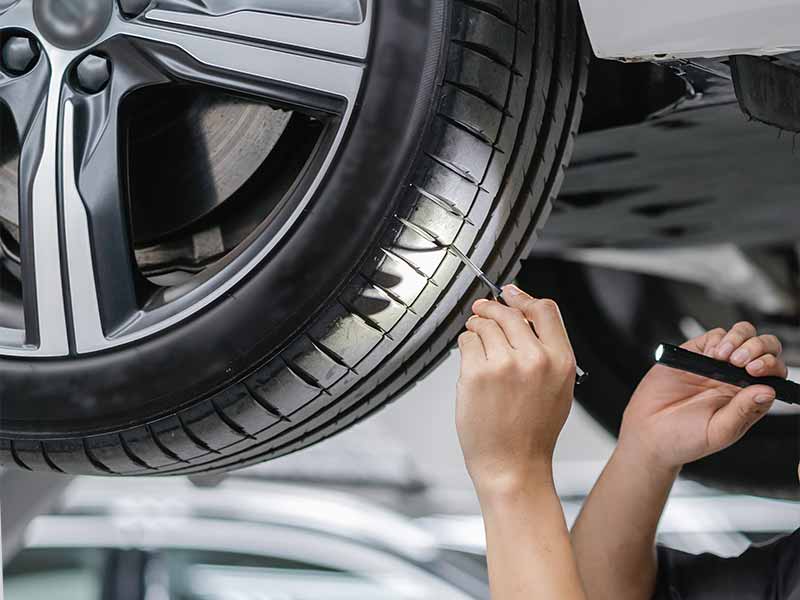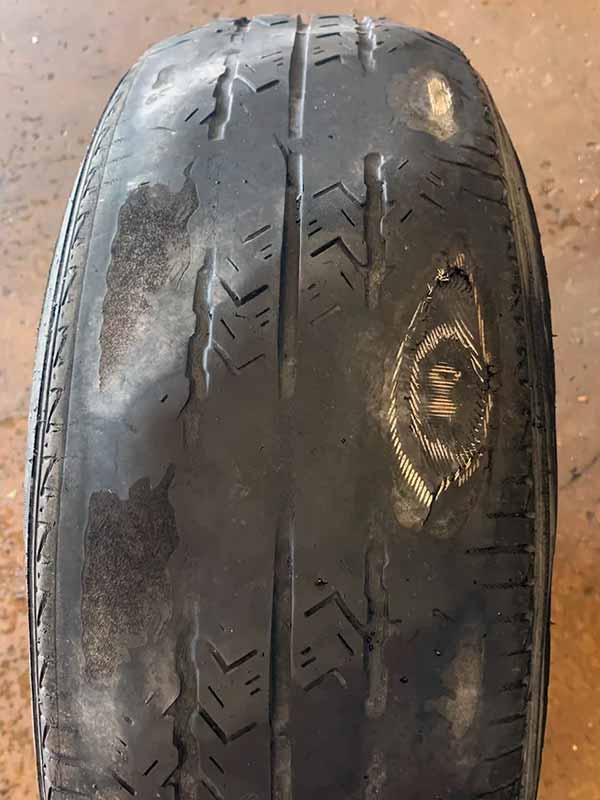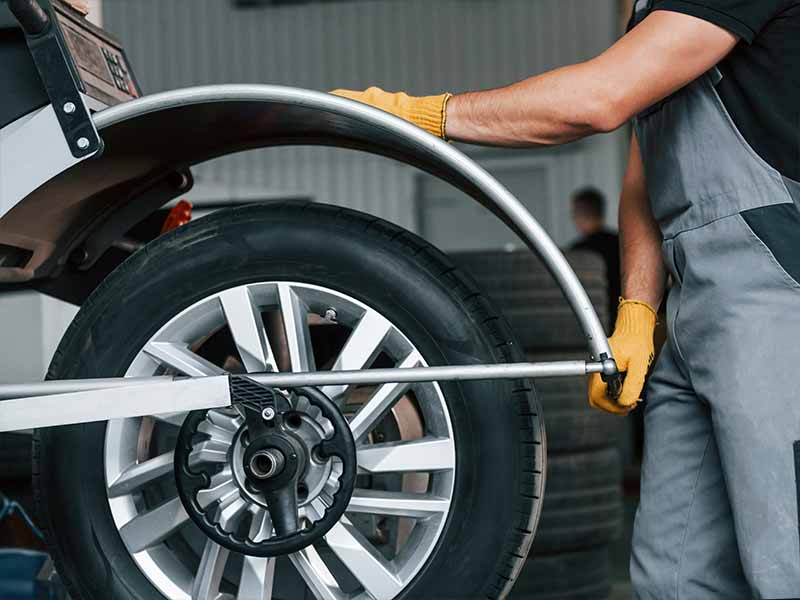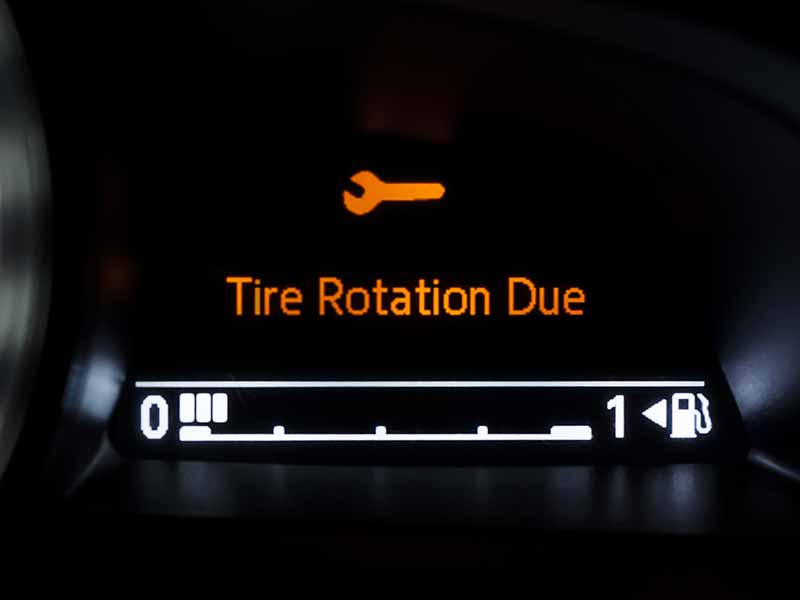Have you ever felt your car vibrate and wondered if rotating your tires would solve the problem? You’re not alone. Many drivers face this issue and seek answers to the same question. Understanding what causes these vibrations and how tire rotation impacts them is crucial for every car owner.
Will Tire Rotation Stop Vibration?
Rotating your tires can reduce the immediacy of vibration issues, especially when moving problematic tires from the front to the rear. However, it’s not a long-term solution to vibration problems, which often require addressing balance or wear issues.
In this article, we explore the relationship between tire rotation and vehicle vibrations, debunk common myths, and provide practical advice on tire maintenance for a smoother, safer drive.

Understanding Tire Vibration
When you’re cruising down the road and suddenly feel a judder or shake, it’s not just an annoyance; it’s a signal from your car. Tire vibration can be a subtle hint or a loud shout that something’s not quite right with your wheels. Let’s dive into what causes this vibration and how it can impact your drive.
The Culprits Behind the Quake
- Balance Issues: Imagine a tire spinning around your axle, and it’s not perfectly weighted all around. This imbalance causes a wobble or shake, especially noticeable at higher speeds. Understanding the nuances of tire balance is key, and steering wheel vibration at high speeds provides more insights into this phenomenon.
- Uneven Tire Wear: Tires don’t always wear down uniformly. Factors like alignment issues or incorrect inflation can lead to uneven wear, which, in turn, causes vibrations. You can explore how uneven tire wear can cause vibration for a deeper understanding.
Feeling the Vibration
Where you feel the vibration can tell you a lot about the problem. Is it in the steering wheel or more through the seat or floorboard? This difference in perception is crucial in diagnosing the issue.
- Steering Wheel Vibration: Generally linked to front wheel problems, this can range from a light tremble to a more persistent shake.
- Seat or Floorboard Vibration: This usually points to issues with the rear tires.
Why Addressing Vibration Matters
Ignoring these vibrations isn’t just about comfort; it’s about preventing further issues with your vehicle. Continuous vibration can lead to:
- Increased wear and tear on your car’s components.
- Potential safety issues, especially at higher speeds.

The Role of Tire Rotation
Tire rotation might sound like a simple concept, but it plays a pivotal role in the longevity and performance of your tires. It’s not just about moving tires from one position to another; it’s about ensuring even wear and tear, which in turn affects how your vehicle handles the road. Let’s break down what tire rotation really entails and debunk some common myths.
What Exactly Is Tire Rotation?
At its core, tire rotation involves moving tires from one position on your vehicle to another. This could mean front to back, side to side, or even a diagonal switch, depending on your vehicle’s drive type and tire wear pattern. The goal? To ensure that each tire wears evenly over time, thereby extending their lifespan and maintaining optimal performance.
The Impact of Tire Rotation on Vibration
Tire rotation can alter the way vibration is felt in your vehicle:
- From Steering Wheel to Seat: Moving a tire with balance issues or uneven wear from the front to the rear can make the vibration less noticeable through the steering wheel. However, this doesn’t solve the problem; it merely shifts the point where the vibration is felt, often to the seat or floorboard.
- A Temporary Solution: Think of tire rotation in this context as a band-aid. It might cover up the symptom (vibration), but it doesn’t heal the underlying issue (tire imbalance or uneven wear).

The Risks of Ignoring the Real Issue
Recognizing that tire rotation is a temporary fix rather than a solution for vibration issues is crucial for your vehicle’s health. Ignoring or misdiagnosing the root cause of tire vibrations can lead to more significant problems down the line. Let’s delve into why it’s essential to address these issues head-on and understand the potential risks of overlooking them.
The Hidden Dangers of Unresolved Vibrations
When tire vibrations are not properly addressed, they can lead to a series of cascading issues:
- Increased Wear and Tear: Continuous vibrations can accelerate the wear on various car components, not just the tires. This includes parts like the suspension system, bearings, and even the steering mechanism.
- Compromised Safety: Vibration can be a sign of underlying issues that may affect your vehicle’s handling and stability, especially at higher speeds. This poses a risk not only to you but also to others on the road.
Why a Quick Fix Isn’t Enough
Tire rotation, while beneficial for even wear, should not be seen as a fix for vibration issues. Here’s why:
- Masking the Problem: Rotating tires can make the symptoms less noticeable, but it doesn’t solve the underlying cause, whether it’s an imbalance, alignment issue, or uneven wear.
- Temporary Relief: The relief provided by tire rotation is often short-lived. The underlying problems will likely resurface, possibly in different ways or on different parts of the vehicle.
Steering Clear of Future Problems
Addressing tire vibration issues promptly and correctly is not just about immediate comfort; it’s about ensuring the longevity and safety of your vehicle. It’s important to:
- Seek Professional Help: If you’re experiencing persistent vibrations, especially after a tire rotation, it’s wise to consult with a professional. They can diagnose the issue accurately and provide the necessary repairs or adjustments.
- Regular Maintenance: Keeping up with regular tire maintenance, including balancing and alignment checks, can prevent many vibration issues from occurring in the first place.

Addressing Tire Rotation Concerns
Navigating through the aftermath of a tire rotation can sometimes leave you with more questions than answers. Why is your car still shaking? Why does it feel different after the tires have been rotated? Let’s address these common concerns and provide some clarity on what might be happening with your vehicle post-tire rotation.
When Shaking Persists: Understanding the Cause
After a tire rotation, it’s not uncommon to experience some residual shaking or changes in how your car feels. Here’s what might be happening:
- Post-Rotation Shaking: If you notice your car shaking after tire rotation and balance, it could be a sign of deeper issues like imbalances or misalignments that were not addressed during the rotation. For more insights, check out steering wheel vibration after tire rotation.
- The Impact of Neglecting Rotation: Failing to rotate your tires regularly can lead to uneven wear, which in turn can cause vibrations. This can manifest even after you’ve had them rotated, as the wear might be too advanced to correct simply through rotation.
Deciphering Changes After Tire Rotation
- Feeling the Difference: After tire rotation, your car may feel different due to the change in tire positions. This is especially true if there was significant uneven wear. The new position of the tires can alter the way vibrations and road feedback are transmitted to the driver.
- Adjustment Period: It’s normal for there to be a brief adjustment period post-rotation as the tires settle into their new positions.
Proactive Steps to Take
To ensure your car runs smoothly and to minimize post-rotation issues, consider the following:
- Regular Inspections: Regularly inspect your tires for signs of uneven wear, and don’t wait until problems become apparent. Early detection can save you from more severe issues down the line.
- Professional Balancing: If you’re experiencing vibrations, consider getting your tires professionally balanced. This process helps to evenly distribute the weight around the tire, reducing vibrations. Learn more about the importance of this process at can unbalanced tires cause vibration.

Proper Tire Maintenance
Maintaining your tires is not just about extending their lifespan; it’s about ensuring your safety and the optimal performance of your vehicle. Proper tire maintenance goes beyond regular rotation – it involves balancing, alignment checks, and understanding the signs of wear. Let’s explore how you can keep your tires in top shape and prevent issues like vibration and uneven wear.
Balancing: A Key Factor in Tire Maintenance
Tire balancing is crucial for a smooth ride. Here’s why it’s important:
- Reduces Vibration: An unbalanced tire can cause annoying vibrations, which can be felt through the steering wheel or the vehicle’s body.
- Prevents Uneven Wear: Balanced tires wear more evenly, which extends their life and maintains better traction and handling.
- Enhances Comfort and Safety: Properly balanced tires improve the comfort of your drive and enhance overall vehicle safety.
For more on how balancing impacts your vehicle, visit can unbalanced tires cause vibration.
Regular Alignment Checks
Misalignment can lead to a host of issues, including uneven tire wear and vibration. Here’s what you need to know:
- Impact of Misalignment: Misaligned wheels can cause your tires to wear unevenly and prematurely. This not only leads to vibration but also affects fuel efficiency and handling.
- Signs of Misalignment: Look out for signs like your car pulling to one side, uneven or rapid tire wear, and a crooked steering wheel when driving straight.
Monitoring Tire Wear
Understanding and monitoring tire wear is essential. Here’s what to keep an eye on:
- Tread Depth: Ensure your tread depth is within legal limits. Worn treads can compromise your vehicle’s grip, especially in wet conditions.
- Wear Patterns: Be aware of wear patterns. Irregular wear can be a sign of alignment issues, suspension problems, or the need for tire rotation.
When to Seek Professional Help
Don’t hesitate to seek professional advice if:
- You’re unsure about the condition of your tires.
- You experience persistent vibration after tire rotation and balancing.
- You notice uneven wear or other signs of tire distress.
Resources
Below are some links you may find helpful when learning about tires:
- Why are my tires vibrating? – Tire Buyer
- How do I know if my tires need to be balanced? – Les Schwab
Final Thoughts
While rotating your tires can temporarily make vibration issues less noticeable, it does not address underlying problems like tire imbalance or uneven wear. Regular tire maintenance, including proper balancing and alignment, is essential.
Remember, being proactive about tire health not only enhances your driving experience but also safeguards against future costly repairs.
Good luck and happy motoring.





